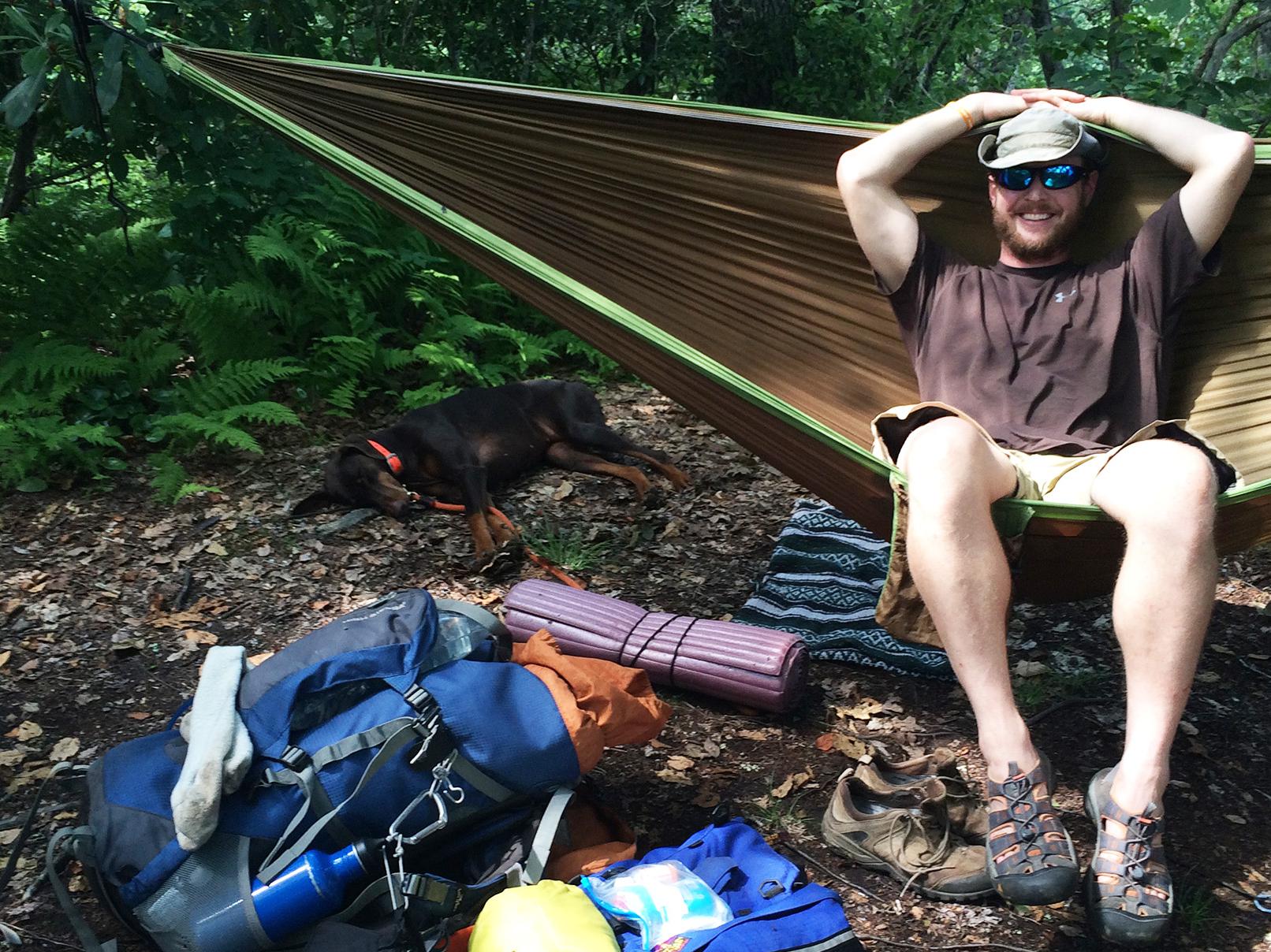Information Possibly Outdated
The information presented on this page was originally released on November 4, 2016. It may not be outdated, but please search our site for more current information. If you plan to quote or reference this information in a publication, please check with the Extension specialist or author before proceeding.
Proper hammock etiquette for those who want to hang
STARKVILLE, Miss. -- Cooler weather brings a great time to get outside, set up a hammock and "just hang" between two trees.
When I am outdoors, one of my favorite ways to enjoy the wildlife and wild places in our state -- other than when I am hunting or fishing -- is to spend time in my hammock. Whether I relax in it while hiking or sleep in it while backpacking, lying in a hammock allows me to be comfortable while enjoying in the great outdoors.
Before you head outside to hang a hammock, there are some important things to consider so that you can continue using trees for future support.
No matter the style of hammock you wish to kick back and relax in, consider how and where you will anchor it. When outdoors, the obvious answer would be between two trees, but how far apart should they be, and does the type of suspension system matter? Where on the trees should you attach the hammock, and how big should the trees be?
Before hanging a hammock at the local state park or national forest, check to make sure there aren’t any regulations against hammock use on the property. Some locations prohibit the use of hammocks due to tree damage that improperly hung hammocks can cause.
When I am looking for good anchor points to attach my hammock, I search for two trees about 12-15 feet apart with diameters at least the size of my head. Make sure they are alive and have no dead branches or “widow makers” that could fall on you.
Use webbing around the trunk instead of rope. Webbing helps reduce damage to the tree. My tree-hugger webbing is 1-2 inches wide. The wider the webbing, the less pressure it puts on any one area of the trunk, which minimizes tree damage.
Hanging a hammock with rope can damage the tree. A thinner rope is more likely to damage the tree by constricting the vascular tissue that allows food to flow from the leaves to the trunk. If the tree is small, you could damage the tissue that transports water up from the roots to the leaves as well. The rule of thumb for hammock hanging is to set it up at a height you are comfortable falling from. Personally, I set up my hammocks so that when I lie in them, I am 12-18 inches above the ground. I have spent time at greater heights in my hammock, but you must always consider safety before climbing high into trees.
Now that you know how to properly set up a hammock, get outside, kick back and enjoy some of Mississippi’s beautiful lands while relaxing in a hammock.

Editor’s Note: Extension Outdoors is a column authored by several different experts in the Mississippi State University Extension Service.










